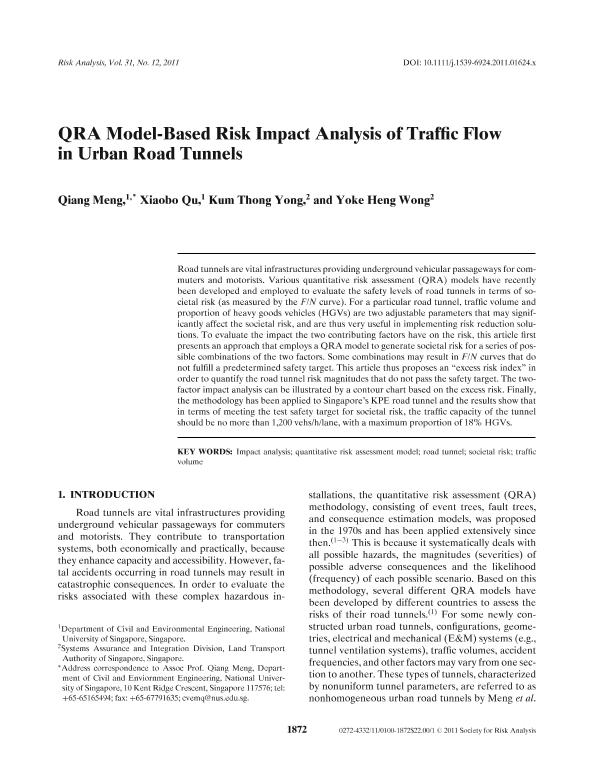To evaluate the impact the two contributing factors have on the risk, this article first presents an approach that employs a QRA model to generate societal risk for a series of possible combinations of the two factors. Some combinations may result in F/N curves that do not fulfill a predetermined safety target. This article thus proposes an excess risk index in order to quantify the road tunnel risk magnitudes that do not pass the safety target. The twofactor impact analysis can be illustrated by a contour chart based on the excess risk. Finally, the methodology has been applied to Singapores KPE road tunnel and the results show that in terms of meeting the test safety target for societal risk, the traffic capacity of the tunnel should be no more than 1,200 vehs/h/lane, with a maximum proportion of 18% HGVs
QRA model -based risk impact analysis of traffic flow in urban road tunnels

Contenido multimedia no disponible por derechos de autor o por acceso restringido. Contacte con la institución para más información.
To evaluate the impact the two contributing factors have on the risk, this article first presents an approach that employs a QRA model to generate societal risk for a series of possible combinations of the two factors. Some combinations may result in F/N curves that do not fulfill a predetermined safety target. This article thus proposes an excess risk index in order to quantify the road tunnel risk magnitudes that do not pass the safety target. The twofactor impact analysis can be illustrated by a contour chart based on the excess risk. Finally, the methodology has been applied to Singapores KPE road tunnel and the results show that in terms of meeting the test safety target for societal risk, the traffic capacity of the tunnel should be no more than 1,200 vehs/h/lane, with a maximum proportion of 18% HGVs

